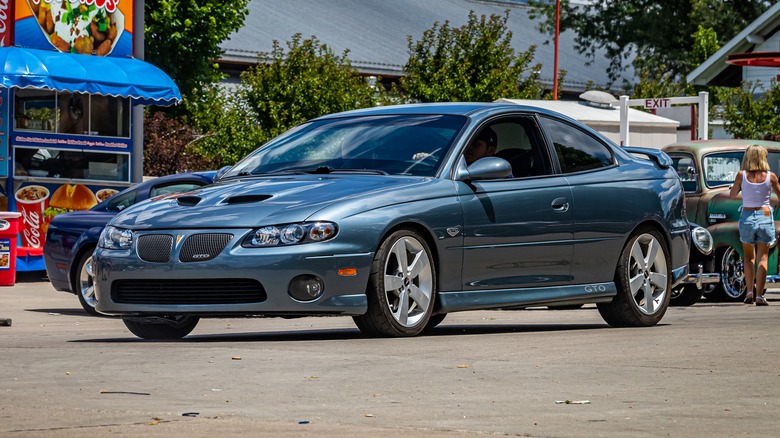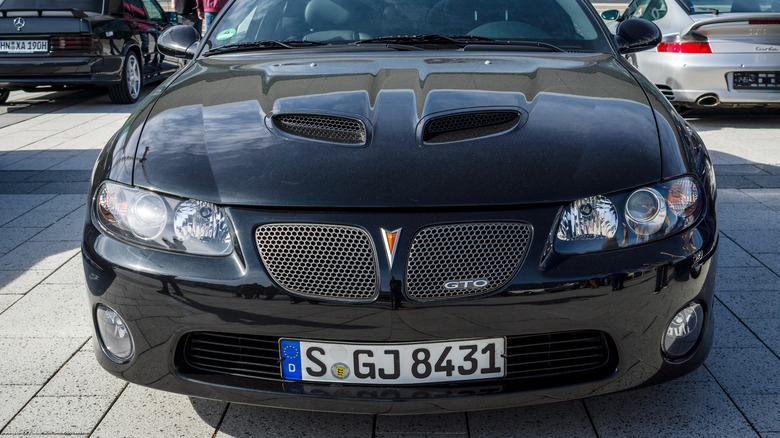
Gestalt Imagery/Shutterstock
Though cars had existed for decades prior, it wasn’t until the 1960s and ’70s that the idea of them being powerful, fast, and tough all in one package became popular. In and around this era, the likes of Chevrolet, Plymouth, and Ford got in on the action, coming out with what became known as «muscle cars» all their own. Alongside these notable manufacturers was Pontiac, which brought one of the most influential muscle cars of all time to the table: the Pontiac GTO, also known by its nickname, «The Judge.»
The GTO stuck around the car scene from 1963 to 1974 before disappearing from show room floors. Decades later in 2004, the car made a miraculous return, but it was quite different. It took on a more contemporary look, smoothing out its angular elements and shrinking in size a bit — distancing itself from the coolest looking Pontiac models ever made.
This is due to the fact that this wasn’t necessarily a GTO at all. Rather, from 2004 to 2006, the final run of GTOs were nothing more than rebadged Holden Monaros: two-door coupés created by General Motors’ Australian subsidiary, Holden, which returned in 2001 after being discontinued in 1977. With this in mind, one has to ask, how did the latest run of GTOs became some of the cars you probably didn’t realize were rebadged models?
How did the GTO just become a rebranded Monaro?

Sergey Kohl/Shutterstock
By the mid-1970s, the Pontiac GTO wasn’t in a great spot. Throughout the end of the previous decade and into the next, sales dropped to a dramatically low rate, prompting Pontiac to rethink its strategy. The Pontiac Ventura was reinvented as the 1974 GTO, with the thinking being that a smaller GTO at a lower cost could improve sales. While this proved true, by the end of the year, Pontiac dropped the GTO entirely to shift focus onto the Trans-Am. The GTO name was retired for 30 years, and when it returned, it did so with the Holden Monaro behind it.
General Motors boss Bob Lutz came up with the idea to bring the Australian-made Monaros to the United States as GTOs in 2002. After talking with the folks at GM, who were reportedly thinking something similar, Lutz went on to actually drive a revamped Monaro, which only further solidified his stance. With that, GM got to work tweaking Monaros and getting them up to United States automobile standards. They were advertised under the GTO name, and the rest is history.
The final Pontiac GTOs might not go down as some of Pontiac’s best work, nor some of its most popular, but, if nothing else, at least their true identity as Holden Monaros will endure as a fascinating piece of car trivia for many years to come.